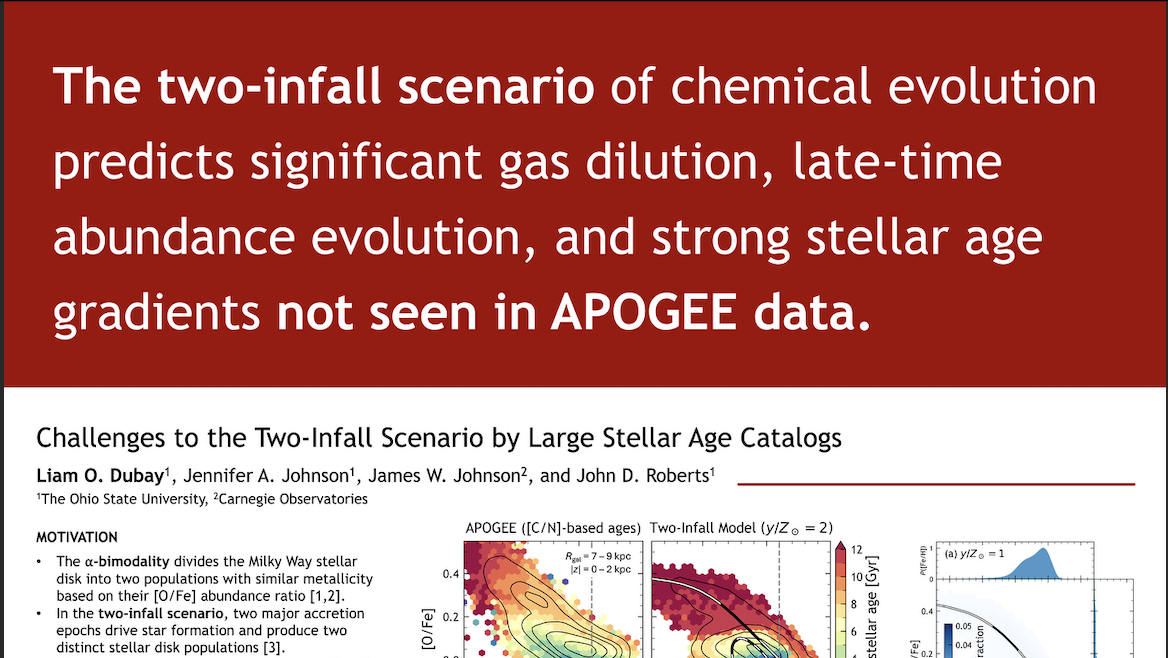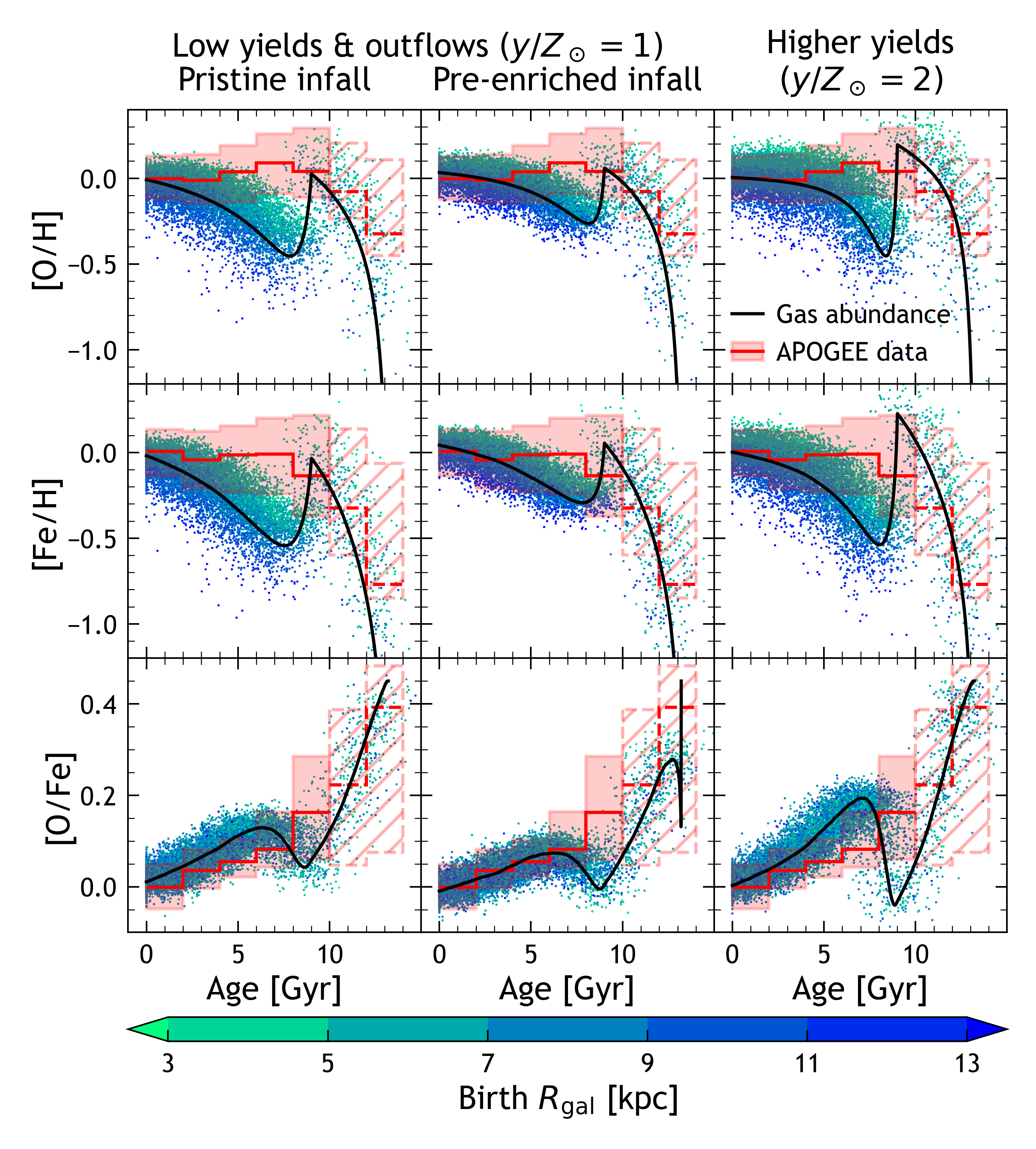
View the poster
Presented at the 2025 SDSS-V Collaboration Meeting in Heidelberg, Germany.

I'm a fifth-year astrophysics PhD student at The Ohio State University. I study the chemical evolution of our Milky Way Galaxy with my advisor, Dr. Jennifer Johnson. I'm an instructor for the Polaris program, and I'm also a planetarium presenter at OSU.
Originally from Portland, Oregon, I graduated from Whitman College in 2021 with a BA in astrophysics and music performance. In my spare time I enjoy rock climbing, photography, and playing the cello.
The two-infall scenario is a popular model for the star formation history of the Milky Way. In the two-infall scenario, two major gas accretion epochs drive star formation in the Galaxy and produce two distinct stellar populations with different element abundance ratios. Recent improvements to large stellar age catalogues allow us to compare age-abundance relationships predicted by chemical evolution models to data across much of the Milky Way's disk.

The above plot shows that the observed relationship between age and metallicity is largely flat for the past ~8 billion years. The two-infall scenario struggles to reproduce this flat relation, especially the model with low nucleosynthetic yields and Galactic outflows (left column). Pre-enriching the accreting gas to low metallicity (center), or increasing the yield scale (right), can mitigate but not completely solve the issue. We also find the model does not match the observed distribution of stellar ages in the Solar neighborhood.
In summary, the apparent age-independence of stellar abundances across the Galaxy considerably restricts the parameter space of the two-infall scenario, more so than other models.
Type Ia supernovae, thermonuclear explosions of white dwarf stars, are a key driver of Galactic chemical evolution because they produce roughly half of the iron in the Galaxy. A complication for chemical evolution models is that these events are delayed (by tens of millions to billions of years) relative to the star formation events which produce their progenitors. The precise functional form of the delay time distribution (DTD) is poorly constrained by observations and is related to our uncertainty regarding the progenitor systems of Type Ia supernovae. The aim of my current research is to better understand the consequences of the Type Ia DTD for the chemical evolution of the Milky Way. To do this, I am using the VICE package to run multi-zone chemical evolution simulations with radial migration of stars.

The above figure demonstrates the effect the Type Ia DTD can have on chemical evolution simulations. Each panel plots histograms of the alpha-element-to-iron ratio, a key diagnostic of the Type Ia supernova contribution, for several radial zones of the Galaxy. The panels are divided vertically by distance from the Galactic midplane, with stars which lie farther away from the midplane appearing in the top panels. In the left-most column, the DTD takes the form of a steep power law and most of the Type Ia supernovae explode soon after star formation. In the second and third columns respectively, an exponential and "plateau" model for the DTD increases the fraction of Type Ia supernovae which are greatly delayed from their progenitors' formation. The result is that the exponential DTD produces many more stars with high values of [alpha/Fe], signifying a lower contribution from Type Ia yields. For comparison, abundances measured by the APOGEE survey are plotted in the right-most column.

Dubay et al. 2024, ApJ 973, 55

Presented at the 2023 Milky Way Surveys conference in Pasadena, CA.

Presented at the 2024 OSU Hayes Advanced Research Forum (transcript).
I completed this project at the University of Hawai'i Research Experience for Undergraduates (REU) in astronomy in Summer 2020 under the supervision of Dr. Ben Shappee.

Dubay et al. 2022, ApJ, 926, 98D
I completed this project at the University of Alabama Huntsville heliophysics REU in Summer 2019 under the supervision of Dr. Tyson Littenberg.

Performed May 2021 at Whitman College.

Just a small pandemic project.